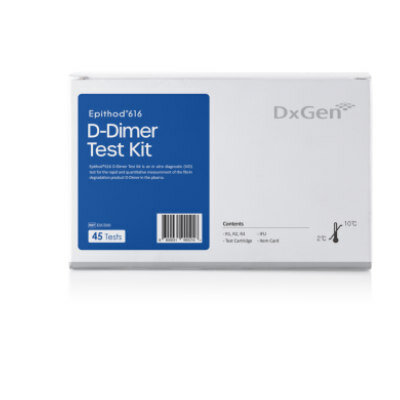Microbiology

Malaria Diagnosis Employs Hydrophilic-Treated Plastic Plates
Malaria is a red blood cell (RBC) infection caused by Plasmodium parasite and to determine RBC infection rate, which is essential for malaria study and diagnosis, microscopic evaluation of Giemsa-stained thin blood smears on glass slides is performed. More...30 Aug 2017

Test Differentiates Lyme Disease from Similar Condition
Lyme disease is the most commonly reported vector-borne illness in the USA, and current laboratory tests are not sensitive enough to detect infection with high accuracy in the first few weeks of illness. In 2015, 95% of confirmed Lyme disease cases were reported from 14 US states. More...29 Aug 2017

Eggshell Layer Makes Bird Virus Highly Infectious
Researchers have likely solved the mystery question of why human-to-human transmission of avian influenza viruses is much lower than from birds to humans. They discovered that in birds an eggshell-like mineral outer layer forms around the virus and provided an explanation of how this would increase the virus’ infectiveness. More...29 Aug 2017

Sensor Test Indicates Early Inflammation in Oral Cavity
Researchers have developed a novel rapid test using chewing gum and the tongue as a 24/7 detector, potentially providing a diagnostic device that could be used by nearly “anyone, anywhere, anytime”. Their first such gum was successful in using saliva samples to identify patients with dental implants who had early-stage inflammation due to bacterial infection. Expanding this platform technology to other diseases could also provide more efficient screening of large populations. More...28 Aug 2017


DNA Sequencing of MRSA Predicts Patient Survival
Methicillin-resistant Staphylococcus aureus (MRSA) is a bacterium that has become resistant to most types of antibiotics, and up to 20% of patients with invasive infections die. Although S. aureus is a common bacterium that lives on the skin, if it gets inside the body through a cut it can cause septicemia. More...23 Aug 2017

Malaria Rapid Test Evaluated in Low Transmission Area
Light microscopy detecting human malarial parasites in Giemsa-stained thick and thin blood films still remains the gold standard for malaria diagnosis. In many peripheral health centers of endemic countries, microscopy is not available due to limited resources or lack of expertise. More...23 Aug 2017
In Other News
Cyclosporiasis Detected in Mexico Travelers
Preoperative Bacteriuria Unconnected to Joint Infection
Hematologic Abnormalities Found in HIV-Infected Children
Review Provides Insight into Therapeutic Interventions
Biosensor Device Developed for Zika Diagnosis
Expanded Pathogen Identification Receives FDA Clearance
Three Commercial Tests for Lyme Borreliosis Evaluated
Molecular Tests Predict TB Treatment Outcome
Test Discriminates Between Viral and Bacterial Infections
Methods Compared for Chagas Disease Diagnosis
TB Screening Recommended for High-Risk Healthcare Workers Only
New Test Distinguishes Zika from Similar Viral Infections
Powassan Virus Diagnosed in Patients with Tick-Borne Diseases
Antimicrobial Therapy Biomarker Enumerates Eosinophil Count Changes
Accuracy of Malaria Tests Evaluated for Febrile Children
Efficacy Evaluated in Maternal Screening for Congenital CMV
Antibody-Based ELISA Detects Zika with High Specificity
Novel Non-Invasive Sampling Technique Diagnoses Cutaneous Leishmaniasis
RT-PCR Evaluated for Taenia Detection
Bacterium Actively Drives CRC Tumor Growth
Rapid Diagnostic Test for RSV Evaluated
Heart Failure Associated with Depleted Intestinal Microbiota
CE-Marked Immunoassay Rapidly Detects Infection Biomarkers
The LabMedica Microbiology channel provides the latest news in the fields of epidemiology, bacteriology, virology, and parasitology, all viewed from the unique perspective of Laboratory Medicine.










